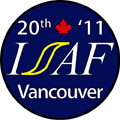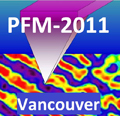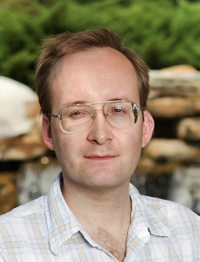Sergei V. Kalinin |
Dr. Sergei V. Kalinin is currently a senior research staff member at Oak Ridge National Laboratory and co-theme leader for scanning probe microscopy at the Center for Nanophase Materials Sciences at ORNL (since 2007), following an Eugene P. Wigner fellow appointment at ORNL (2002–2004). He is also adjunct faculty at Pennsylvania State University and adjunct associate professor at the Department of Materials Sciences and Engineering at the University of Tennessee, Knoxville. |
|
Oak Ridge National Laboratory, USA |
||
Kalinin received his PhD degree in materials science at the University of Pennsylvania in 2002. During his academic career, he has been the recipient of the Presidential Early Career Award for Scientists and Engineers (2009), Burton Medal of American Microscopy Society (2010), IEEE-TUFFC Young Investigator Award (2010), the Robert L. Coble (2009) and Ross Coffin Purdy (2003) Awards of American Ceramics Society, AVS Peter Mark Memorial Award (2008), and 2 R&D100 awards (2010 and 2008), as well as Wigner Fellowship of Oak Ridge National Laboratory. He is the author of more than 180 scientific papers and 14 patents and patent disclosures on different aspects of SPM and ferroelectric materials applications. He has organized a series of international workshops on piezoresponse force microscopy and SPM for energy storage materials.
|
||
Novel Dynamics mode of Piezoresponse Force and Electrochemical Strain Microscopy
Piezoresponse Force Microscopy has become the dominant tool for characterization and polarization manipulation in ferroelectric and ferroelastic materials. The same electromechanical detection principle is employed in the Electrochemical Strain Microscopy that allows probing ionic motion and electrochemical reactivity in ionic solids. However, application of both PFM and ESM can be adversely affected by surface roughness and composition heterogeneities that affect measured signal through direct and indirect topographic cross-talk, giving rise to spurious and difficult to interpret data. In this tutorial, I will briefly summarize the principles and applications of PFM and ESM, discuss the factors such as contact mechanics and cantilever dynamics that control the signal, and dominant cross-talk mechanisms. The recent strategies for quantitative PFM/ESM measurements including band excitation and dual ac resonant frequency tracking are discussed. The applications of BE PFM/ESM for time and voltage spectroscopies of ferroelectric and ionic materials are illustrated. Special attention is payed to the role of ionic effects and surface reactivity in classical PFM imaging of ferroelectric and non-ferroelectric oxides, as well as some criteria to distinguish ferroelectricity from ionic responses.







